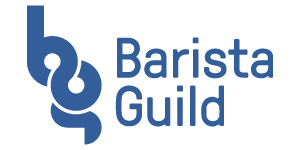BGA Events at Barista Nation San Francisco
 |
|
Photo courtesy of sprudge.com.
|
The BGA was present at Barista Nation last weekend in San Francisco, and I was happy to be a small part of it! BGA volunteers proctored 11 certification exams, hosted lectures and ran a Member-Driven latte art throw down at the end of the night. Over 250 attendees filtered in and out of the event throughout the day, making it the best attended Barista Nation yet. This is one of those great times where being a BGA member and doing my job as SCAA Membership Coordinator converge, and I was honored to lead a round table discussion with some formidable minds in the coffee community.
Along with fellow BGA members Sean Komescher, Alex Littlejohn, Todd Goldsworthy, and Sarah Leslie, we covered the topic: Standards and Expectations. First, we distinguished between industry standards and industry best practices. Many areas of specialty coffee – especially in the relatively newer realms of espresso preparation – actually do not have set scientifically backed standards. Many of the guidelines set by the Barista Guild of America are what are known as best practices. For example, the SCAA’s definition of espresso has been built by hundreds of individuals with expertise in the field of espresso, and has created a general consensus about what that definition should be. Still, the definition has not undergone rigorous scientific study, and so is not set in stone as an industry standard. While many coffee professionals may agree that it is a strong definition, it will continue to take some time for further evidence to support it.
So with that out of the way, we listed some items that do have some clear standards or best practices. We discussed brewing standards, water standards, cupping protocols, and espresso. Sometimes discussion of a standard came in the form of a question, “Does Specialty Coffee have a water standard?”. This brought the group to another question – if industry professionals don’t know about standards, are the standards useful? Does that make a person not qualified to create standard beverages? The room was attended with a wide range of audience, from professional cuppers to Level 2 Certified baristas, and the answers were just as varied. Some could not believe that there was so much flexibility in beverage preparation, while others contended that they created great beverages outside of the range of the standard.
Next, we discussed what was missing in our standards. The group proposed quite a list – from vetting espresso and grinder equipment, to cleanliness and maintenance, to customer service. They suggested creating a system to vet cafes and score them on quality and service, in order to distinguish quality cafés from average cafes. The biggest cause for discussion from what was missing was grind. While the group lamented the lack of a standard on grind size, they also discussed the myriad variables that make up grind size, making it a difficult thing to quantify and standardize. The group agreed that while the development of a standard would be helpful, there would be significant challenges to create one. Moreover, they repeatedly stated that often grind was the X-factor in preparing great coffee, a component that need to be worked to through trial and error during preparation. I personally had never heard coffee professionals use the word “algebra” so many times in one hour!
Finally, our group touched on how coffee professionals manage expectations of standards & service during our interactions with coffee drinkers. For the purposes of this write-up, I’d like to pose it as a question for discussion in our comments. How do we, as an industry, manage those expectations? Do we? Can average coffee notice a difference? What about a cafés best regulars?
For a full wrap up of the Barista Nation Event, visit: Sprudge's Report
For more information about SCAA’s standards and definitions, I recommend you visit: http://scaa.org/resources
For more information about specialty coffee consumers, visit: http://www.scaa.org/chronicle/2012/09/21/insights-into-consumer-purchasing-choices/
